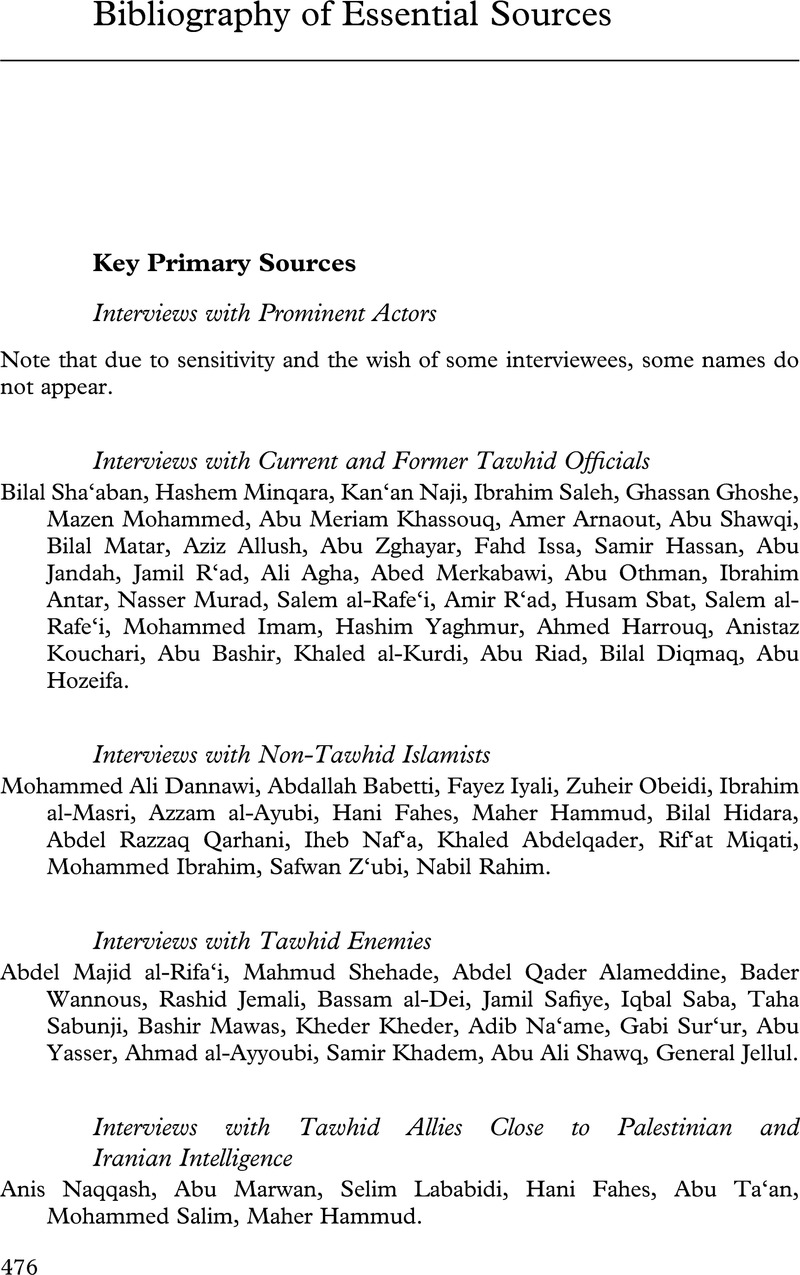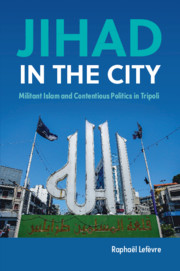Book contents
- Jihad in the City
- Jihad in the City
- Copyright page
- Contents
- Maps
- Figures
- Tables
- Acknowledgments
- Glossary of Concepts
- Note on Transliteration
- Maps
- Introduction
- 1 Tales of a Rebel City
- 2 Neighborhood Islamism
- 3 The Emergence of Tawhid
- 4 A Vernacular Islamist Ideology
- 5 Social Jihad
- 6 The Illusion of Religious Violence
- 7 The Geopolitics of Islamism
- 8 The Downfall of Tawhid
- Conclusion
- Bibliography of Essential Sources
- Index
- References
Bibliography of Essential Sources
Published online by Cambridge University Press: 04 May 2021
- Jihad in the City
- Jihad in the City
- Copyright page
- Contents
- Maps
- Figures
- Tables
- Acknowledgments
- Glossary of Concepts
- Note on Transliteration
- Maps
- Introduction
- 1 Tales of a Rebel City
- 2 Neighborhood Islamism
- 3 The Emergence of Tawhid
- 4 A Vernacular Islamist Ideology
- 5 Social Jihad
- 6 The Illusion of Religious Violence
- 7 The Geopolitics of Islamism
- 8 The Downfall of Tawhid
- Conclusion
- Bibliography of Essential Sources
- Index
- References
Summary

- Type
- Chapter
- Information
- Jihad in the CityMilitant Islam and Contentious Politics in Tripoli, pp. 476 - 480Publisher: Cambridge University PressPrint publication year: 2021



